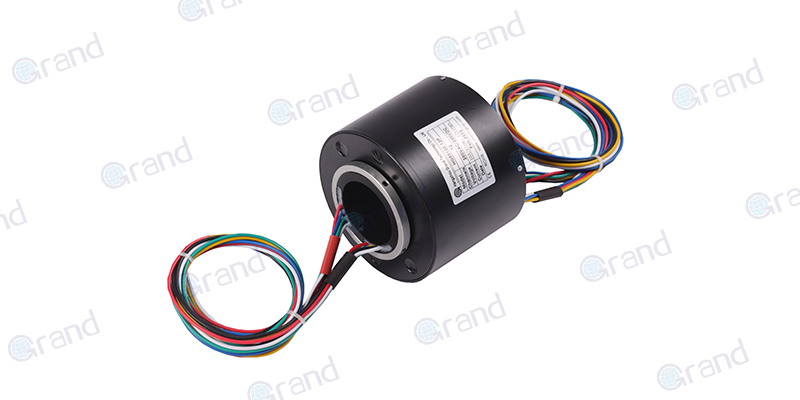Within this article, we delve into the technical realm of drum slip rings – versatile devices that form an essential part of modern rotary machinery. We’ll cover the basics, delve deep into their workings, discuss benefits and drawbacks, and prognosticate their future evolution.
Introduction to Drum Slip Rings
Imagine a world where electrical connections are continuously interrupted or cumbersome, limiting the full potential of numerous devices and innovations. That’s where drum slip rings swoop in as the unsung heroes to ensure seamless power and signal transmission between stationary and rotating elements. These vital electromechanical components enable various applications across myriad industries to work smoothly and efficiently.
In this article, we will navigate through the intricate world of drum slip rings, beginning with a basic understanding of their purpose and attributes. As we progress, we will delve deeper into their inner workings and construction. Furthermore, we’ll explore the numerous applications where they are indispensable, discussing the advantages they bring and the challenges they face. Finally, we’ll touch upon the maintenance aspect and glimpse into the future of these essential engineering marvels. Join us on this exploratory journey to appreciate the ingenuity of drum slip rings and their broad-reaching implications in modern society.
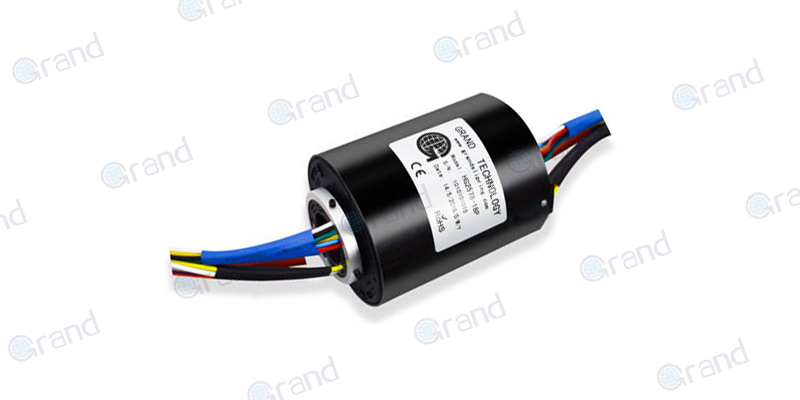
Basic Understanding of Drum Slip Rings
In engineering, seamless communication and power supply between static and rotating machinery parts is a critical challenge. This is where the role of slip rings becomes eminent. They are electro-mechanical devices designed to facilitate the flow of current or signals from a stationary part of the equipment to its rotating component. In doing so, they address the need for consistent electricity or data transfer, reducing the wear and tear usually caused by physical wire connections.
Among the diverse types of slip rings, drum slip rings, named for their characteristic cylindrical shape, play an integral part. Other types include pancake slip rings, capsule slip rings, through-bore slip rings, and even wireless slip rings or mercury-wetted slip rings. Each type differs in terms of design and applications, yet they all serve the fundamental purpose of maintaining an uninterrupted electrical connection during machine operation.

The primary function of slip rings, including drum slip rings, is to provide an uninterrupted electrical path through rotating assemblies. They operate through the principle of electromagnetic induction. As the drum component of the slip ring rotates, it maintains a continuous interface with brushes or similar contact mechanisms. Through this sustained contact, they facilitate the transfer of electric power or electrical signals, ensuring the overall efficiency and functionality of the rotating machinery.
Understanding these foundational aspects of drum slip rings will provide us with the groundwork needed before diving into more detailed insights, applications, advantages, and challenges associated with these essential devices.
Delving into Drum Slip Rings
Let’s now turn our focus solely to drum slip rings – these unique components that are defined by their cylindrical or ‘drum’ shape, hence the name. Rather than relying on a flat disc or a delicate structure, drum slip rings employ a robust design that typically involves multiple concentric rings. This design offers an expanded surface area for electrical contact, which can handle high current loads more efficiently.
When compared to other types of slip rings, drum slip rings are often chosen for their comprehensive abilities. Pancake slip rings, for instance, have a flat design, restricting the space for multiple contacts or circuits. For capsule or miniature slip rings, while they find use in limited-space scenarios, their smaller structure might not provide the endurance required for heavy-duty operations. On the other extreme, there are through-bore slip rings designed for handling wiring or fluid passages through the center, though their complexity makes them more expensive. Thus, drum slip rings strike a balance of utility, efficiency, and robustness, making them versatile for numerous applications.
The structure of a drum slip ring comprises mainly the rotating part (drum) and the stationary part (brush block). These parts are usually made up of various conductive materials, including precious metals. The drum section is typically ring-shaped, and the conductive tracks are placed on the ring. The brush block houses the brushes that are continuously in physical contact with the drum section as it rotates. This constant contact ensures an uninterrupted flow of electricity or signals.
The working principle of drum slip rings is quite straightforward. As the machinery starts operating, the drum rotates. The brushes in the stationary part maintain continuous contact with the rotating drum, thus allowing for stable transmission of power or signals between the stationary and the rotating components. Unlike physical wires that could tangle or break due to constant rotation, this clever system ensures seamless operation, an aspect that we’ll further appreciate in subsequent sections discussing applications and advantages.
Applications of Drum Slip Rings
Due to their versatile and robust characteristics, drum slip rings find usage across a broad spectrum of industries and scenarios. Their reliability and efficiency make them an ideal choice for sectors ranging from renewable energy to healthcare, as well as for applications like rotary sensors. We’ve outlined below several examples of their deployment, demonstrating the breadth of their influence.
Renewable Energy: Wind Turbines
Wind turbines are a perfect illustration of how drum slip rings play an essential role in renewable energy generation. Within a wind turbine, the nacelle – the housing containing the generator and other components – rotates to face the direction of the wind. To facilitate the transmission of electricity generated by the generator in the nacelle to the stationary transformer located on the ground, drum slip rings are employed. By connecting these rotating and stationary components, drum slip rings enable the continuous flow of electricity without causing any undue strain on the wiring.

Medical Equipment: Medical Imaging Systems
Sophisticated imaging systems such as CT scanners and MRI (Magnetic Resonance Imaging) machines showcase the importance of drum slip rings in medical technology. These machines rely on a rotating gantry, requiring seamless power and data transmission between the rotating and stationary components. Drum slip rings facilitate this transmission in such critical applications, ultimately contributing to better patient care and diagnosis.
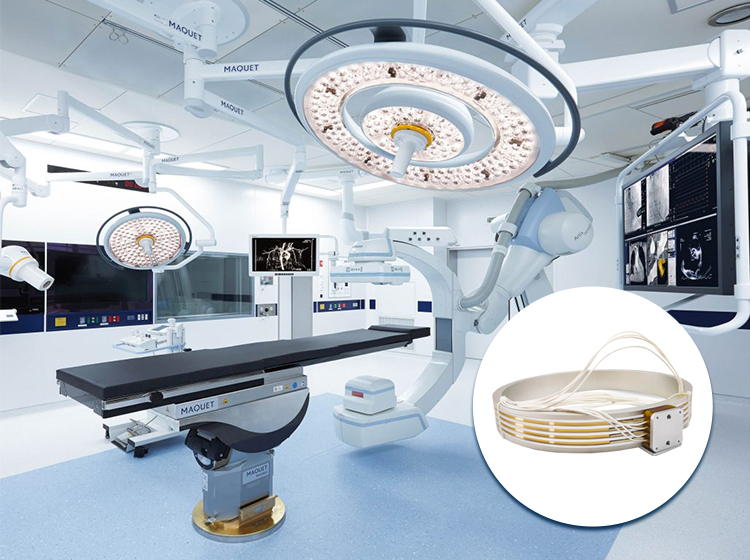
Industrial Automation: Rotary Sensors
In the realm of industrial automation, rotary sensors play a significant role in measuring position, displacement, and velocity. Drum slip rings are often used in these sensors to enable the unhindered transmission of sensor data or power, ensuring accurate and continuous measurements. An example includes rotary encoders, commonly found in robotics or motion control systems, which use drum slip rings to transmit signals reliably despite their continuous rotational movement.

Defense and Aerospace: Radar Systems
Radar systems, heavily employed in defense and aerospace applications, are yet another area where drum slip rings excel. With radar antennas rotating continuously to provide comprehensive coverage of their surroundings, there’s a clear need for uninterrupted power supply and data transmission. Drum slip rings play an indispensable role in maintaining the electrical connections in these environments, ultimately contributing to the overall functionality and efficiency of the system.
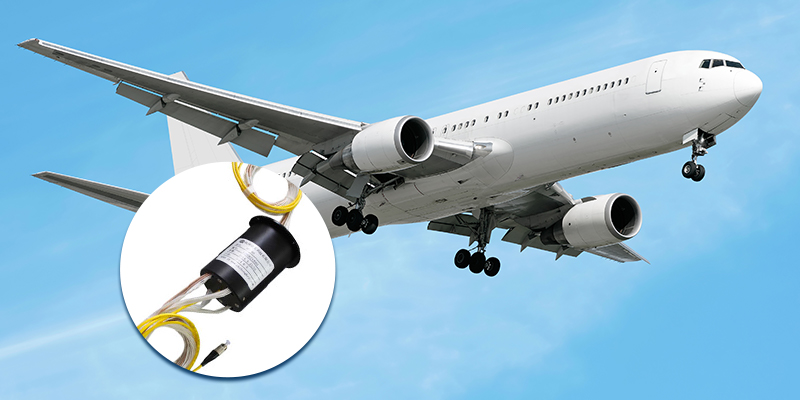
These real-life examples demonstrate the widespread application of drum slip rings, owing to their benefits and adaptable nature. As technology evolves and more industries adopt advanced systems that require rotational connectivity, the prominence of drum slip rings will only expand.
Advantages of Drum Slip Rings
The applicability of drum slip rings extends far and wide due to the benefits they offer. They are a preferred solution by many manufacturers and are considered a critical component in many rotational systems. Let’s examine the advantages that make them such an appealing choice:
Broad Spectrum of Applications
One of the primary benefits of drum slip rings is their adaptability and versatility across a wide range of applications. From wind turbines and medical devices to radar systems and rotary sensors, they can be found in numerous settings, both commercial and industrial. Their robust construction allows them to seamlessly integrate into various systems, even in harsh environments or demanding conditions.
Uninterrupted Power and Signal Transmission
By providing consistent power and signal pathways across rotating interfaces, drum slip rings reduce hiccups and interruptions usually seen with traditional wired connections. This smoother operation can drastically boost the overall performance and efficiency of the engineered systems they are a part of.
Enhanced Durability
Compared to other types of slip rings, drum slip rings are often more durable and longer-lasting. This is due to the increased contact surface area afforded by their design. Their extraordinary endurance, particularly in handling high current loads, adds to their appeal for heavy-duty applications.
Ease of Maintenance
Drum slip rings can be easily cleaned and maintained. In many cases, the brushes need a simple dusting off to continue functioning efficiently. This ease of maintenance leads to fewer downtimes, making drum slip rings a cost-effective solution in the long run.
Optimized Design
Manufacturers often favor drum slip rings over other types due to their design. Unlike the space constraints of pancake slip rings or the complexity of through-bore slip rings, drum slip rings offer a balanced combination of space optimization, simplicity, and efficiency. This optimized design, which can accommodate multiple circuits, makes them an ideal choice for manufacturers who seek a highly capable yet straightforward solution.
In light of these advantages, it’s easy to see why drum slip rings have earned a place of prominence in various industries. They prove to be not only functionally superior but also economically effective, carving out a unique niche for themselves amidst other types of slip rings.
Disadvantages and Challenges with Drum Slip Rings
While drum slip rings present a host of advantages that enhance their appeal, it’s also important to consider the challenges and limitations associated with this technology. Just as with any other technological component, there are certain drawbacks inherent in drum slip rings that need to be highlighted to present a well-rounded picture.
Wear and Tear
The very nature of the slip ring – constant contact between brushes and the rotating drum – means wear and tear is inevitable. This friction can lead to the wearing down of the brushes over time, requiring their replacement. Depending upon the application and working conditions, these replacements can potentially lead to additional costs and downtime.
Sensitive to Environmental Conditions
While drum slip rings are designed to function in a range of environments, their performance can be affected by certain conditions. High temperature, dusty environments, and exposure to corrosive materials or extreme vibrations can impact their operation and longevity. Manufacturers need to consider these factors when integrating drum slip rings into their systems.
Data Transmission Limitations
Although drum slip rings can facilitate the transmission of power and signals, they might have limitations when transmitting high-frequency data or signals. This could pose a limitation in certain high-speed transmission scenarios or where the requirement for data transmission is particularly demanding.
Complexity in Multi-Circuit Systems
Drum slip rings, although robust and versatile, can potentially become complex when handling multi-circuit systems. This complexity arises from the number of conductive rings and brushes required to accommodate multiple circuits. Such scenarios require careful design and technical know-how to ensure favorable outcomes.
Despite these challenges, the use of drum slip rings is widely prevalent, reflecting their utility and effectiveness. It’s important to weigh these challenges against their advantages, and the specific requirements of any given application, to make an informed decision about their adoption. It’s precisely through this delicate balance of virtues and liabilities that technological progress marches forward.
Maintenance and Troubleshooting of Drum Slip Rings
Maintaining drum slip rings effectively is paramount to their long-term performance and durability. Regular maintenance can prevent potential issues that might result in operational downtime. Here, we outline the recommended practices for maintenance and provide some guidance on troubleshooting common issues.
Maintenance: Best Practices
Regular Cleaning
The most fundamental aspect of drum slip ring maintenance is consistent cleaning. Accumulation of dust or other particles on the ring surface can hamper the quality of the electrical connection. Cleaning the ring and brush surfaces using appropriate cleaning agents or compressed air can prevent such issues.
Component Check
Frequent inspection of the brushes and rings should become a routine of your maintenance schedule. Check for signs of excessive wear or damage on these components. In most drum slip rings, the brushes typically wear out first, and timely replacements can avoid unexpected shutdowns.
Operational Environment Control
Maintaining control over the operational environment plays a crucial role in extending the slip ring’s lifespan. Exposure to excessive heat, dust, or corrosive elements can harm your drum slip ring. Implementing appropriate environmental controls and frequently examining the slip ring’s performance in harsh conditions can go a long way in maintaining its health.
Troubleshooting: Common Issues
Sometimes, despite regular maintenance, issues may arise. Here are some common problems and ways to troubleshoot them:
Intermittent Signal
If the signal being transmitted becomes intermittent, it might be due to a worn-out brush or a tarnished ring surface. Inspect these components, clean the rings, and replace the brushes if necessary.
Power Loss or Fluctuation
Power losses or fluctuations could indicate a broken wire or a damaged brush. Inspecting the internal wiring and brush conditions should be your first troubleshooting step.
Excessive Noise or Vibration
Check for misalignment or instability of the rotating system if you notice excessive noise or vibration during operation. It could also be due to worn-out bearings, which would need replacement in such a case.
In conclusion, drum slip rings, like any other mechanical component, require regular maintenance and attention to perform at their best. Adopting these simple yet effective practices and resolving any issues promptly would ensure a longer lifespan and better performance for your drum slip rings.
Trends and Future of Drum Slip Rings
Drum slip rings, similar to other components embedded within technology’s ecosystem, aren’t static. They too are evolving in line with technological advances, ongoing research, and industry needs. Let’s review current trends taking shape in this field and assess the impact they might have on future adaptations and usage of drum slip rings.
Technology Innovations and Ongoing Developments
Fiber Optic Slip Rings (FOSR)
The demand for high-speed, high-frequency data transmission has paved the way for developing Fiber Optic Slip Rings (FOSRs). These devices, capable of handling large packets of data, can be incorporated with traditional drum slip rings, creating hybrid slip rings that are poised to deliver extraordinary bandwidth for modern systems.
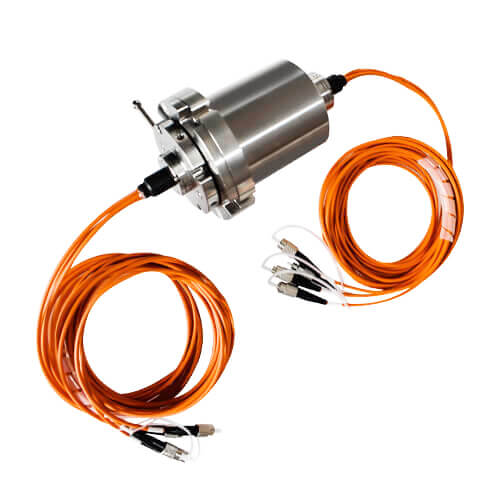
Wireless Power Transfers
While it remains an early-phase technology, research is ongoing in wireless power transfers. If integrated with drum slip ring systems, such a development could lead to reduced mechanical parts and zero friction-related wear and tear, thus enhancing the longevity of the slip ring system and decreasing maintenance requirements.
Advanced Materials and Designs
The introduction of advanced materials and new designs into the slip ring industry is another trend. These could include the use of highly conductive, durable metals for the ring and brush components and compact designs for space-constrained applications. These advancements promise to make drum slip rings even more efficient and robust.
Impact on Future Usage
These trends and innovations suggest a promising future for drum slip rings, with potential enhancements in their capabilities and a widened scope of applications.
The advent of FOSRs and the potential integration with traditional drum slip rings would elevate data transfer rates, enabling the implementation of drum slip rings in high-speed data-centric applications like advanced radar systems, satellite communications, and high-resolution medical imaging technology.
Wireless power transfers, once they become more mature, are likely to revolutionize many industries, with drum slip rings following this trend by becoming more reliable, low-maintenance, and efficient in their operation.
Furthermore, the use of advanced materials and innovative designs would increase the service life of drum slip rings. It could also enable their accommodation into more diverse settings, allowing for novel applications of drum slip rings.
In conclusion, the future of drum slip rings appears to be dynamic and transformative, driven by ongoing technological advancements and research. This trajectory ensures their relevance in today’s rapidly evolving technological vista and reinforces their significance across numerous applications.
Conclusion
Throughout this article, we’ve traversed the technological landscape of drum slip rings, shedding light on their engineering, benefits, challenges, and potential future advancements.
FAQs about Drum Slip Rings
Q: What is the primary use of a drum slip ring?
A: Drum slip rings are used to provide a continuous electrical connection between stationary and rotating systems.
Q: Can drum slip rings handle data signals?
A: Yes, alongside power, they can transfer data and control signals without interruption during rotation.
Q: What is a drum slip ring?
A: A drum slip ring is an electromechanical device that allows the transmission of power and electrical signals from a stationary to a rotating structure. It consists of a cylindrical drum, which rotates with the machinery, and stationary brushes that slide over the drum, maintaining an electrical connection.
Q: How do drum slip rings work?
A: Drum slip rings work by having conductive tracks on the surface of the rotating drum. Brushes, or contact wires, remain in constant contact with these tracks as the drum rotates, allowing electrical currents or data signals to pass through without interruption.
Q: What are the typical applications of drum slip rings?
A: Drum slip rings are used in many applications where continuous rotation is required without tangling wires. This includes closed-circuit television cameras (CCTV), wind turbines, robotics, medical equipment like CT scanners, and rotary tables, amongst others.
Q: What materials are used to make drum slip rings?
A: Drum slip rings can be made from a variety of materials, including precious metals like gold and silver for their conductive and corrosion-resistant properties, and more common metals such as copper and brass, depending on the requirements of the application.
Q: Can drum slip rings transmit data as well as power?
A: Yes, drum slip rings can transmit both power and data signals. High-performance drum slip rings are designed to handle the transfer of various signals, such as Ethernet, USB, high-frequency, and control signals, alongside power distribution.
Q: How long do drum slip rings last?
A: The lifespan of a drum slip ring depends on various factors including the operating environment, the quality of the materials, the design and construction of the slip ring, and the amount of maintenance it receives. With proper design and maintenance, drum slip rings can last several years.
Q: How can one minimize wear and tear in drum slip rings?
A: To minimize wear and tear, ensure that the slip rings are regularly cleaned and maintained, use high-quality materials, and ensure that brushes align perfectly with the tracks. Specific designs to mitigate shock and vibration, and incorporating materials like precious metals can also extend the lifetime of slip rings.
Q: Are there any special considerations for using drum slip rings in harsh environments?
A: Yes, special considerations must be made for drum slip rings used in harsh environments. This includes using materials that are resistant to corrosion, temperature extremes, and contamination. Sealed designs that prevent the ingress of dust, water, or chemical vapors can be crucial for reliable operation in such settings.
See What We Can Do

